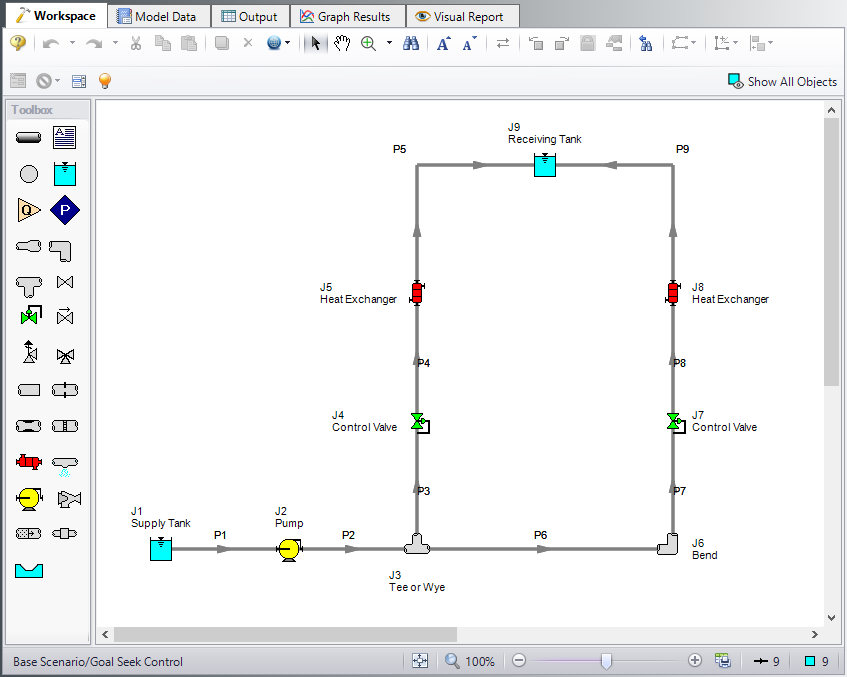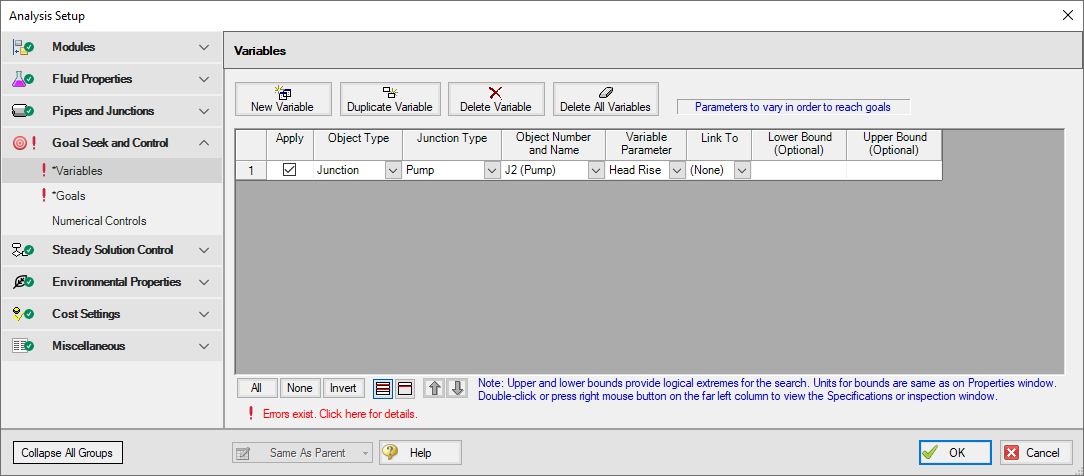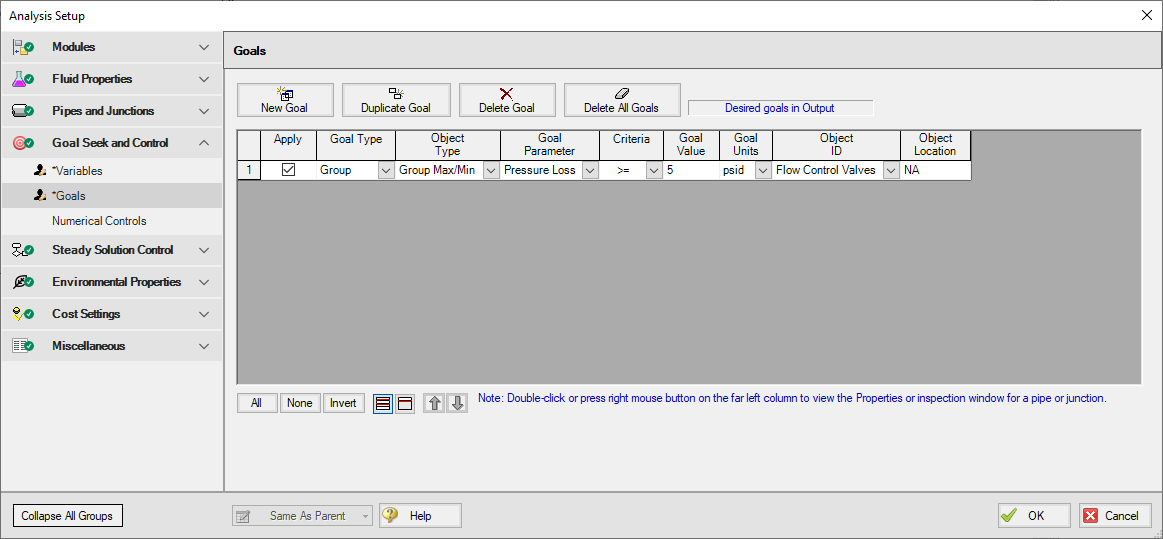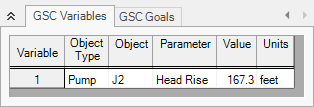Pump Sizing and Selection with Flow Control Valves - GSC (English Units)
Pump Sizing and Selection with Flow Control Valves - GSC (Metric Units)
Summary
The piping for a heat exchanger system is being designed. The system will pump supply water from a tank pressurized to
Use the GSC module to size the pump.
Note: This example can only be run if you have a license for the GSC module.
Topics Covered
-
Defining the Goal Seek and Control group
-
Using Pump head rise as a GSC Variable
-
Using Group Max/Min Goals
Required Knowledge
This example assumes the user has already worked through the Walk-Through Examples section, and has a level of knowledge consistent with the topics covered there. If this is not the case, please review the Walk-Through Examples, beginning with the Beginner - Three Reservoir example. You can also watch the Fathom Quick Start Video Tutorial Series, as they cover the majority of the topics discussed in the Three-Reservoir Model example.
In addition the user should have worked through the Beginner: Heat Transfer in a Pipe - GSC example and the Spray Discharge System - GSC example, which demonstrates how to use Group Max/Min goals.
Model Files
This example uses the following files, which are installed in the Examples folder as part of the AFT Fathom installation:
Step 1. Start AFT Fathom
From the Start Menu choose the AFT Fathom 13 folder and select AFT Fathom 13.
To ensure that your results are the same as those presented in this documentation, this example should be run using all default AFT Fathom settings, unless you are specifically instructed to do otherwise.
Step 2. Open the model
Open the US - Pump Sizing and Selection with Flow Control Valves.fth example file and save it as a new file. Right click on the Base Scenario and select Create Child. Name the child scenario Goal Seek Control.
Set the J2 Pump Sizing Parameter to Head Rise, with a Fixed Head Rise of
The workspace should look like Figure 1 below:
Step 3. Create a Group
Create a group named Flow Control Valves by opening the Edit menu, hover over Groups, and select Create. Add both Control Valve junctions J4 and J7 to the group.
Step 4. Define the Modules Group
Open Analysis Setup, and navigate to the Modules panel. Check the box next to Activate GSC. The Use option should automatically be selected, making GSC enabled for use.
Step 5. Define the Goal Seek and Control Group
Specify the variables and goals for the model.
Variables Panel
Select the Variables panel in the Goal Seek and Control group. For this example, click New Variable and enter the following variable data:
-
Apply = Checked
-
Object Type = Junction
-
Junction Type = Pump
-
Junction Number and Name = J2 (Pump)
-
Variable Parameter = Head Rise
-
Link To = (None)
After entering the data, the Variables panel should appear as shown in Figure 2:
Goals Panel
Select the Goals panel in the Goal Seek and Control group.
Create a new goal for the pressure drop across the flow control valves as defined below (if the option for a group goal is not visible, you may have forgotten to create a group as discussed above). Click New Goal and enter the following:
-
Apply = Selected
-
Goal Type = Group
-
Object Type = Group Max/Min
-
Goal Parameter = Pressure Loss
-
Criteria = >=
-
Goal Value = 5
-
Goal Units = psid
-
Object ID = Flow Control Valves
-
Object Location = NA
After entering the data, the Goals panel should appear as shown in Figure 3:
Step 6. Run the Model
Click Run Model on the toolbar or from the Analysis menu. This will open the Solution Progress window. This window allows you to watch as the AFT Fathom solver converges on the answer. Now view the results by clicking the Output button at the bottom of the Solution Progress window.
Step 7. Examine the Output
The results of the GSC module analysis are shown in the General Output section. The GSC Variables tab shows the final value for the variable parameter, as shown in Figure 4. The pump head rise required for this system to supply a minimum of
Note that the results for this example are same as the results for the original Pump Selection with Flow Control Valves example.








